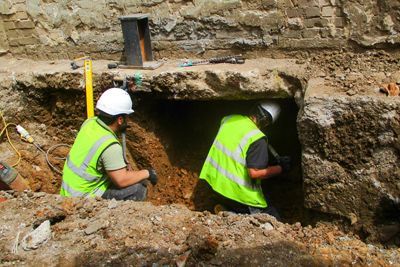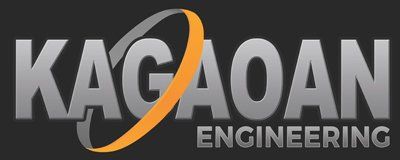Conventional Concrete and Pile Supported Underpinning - NYC, Manhattan, The Boroughs, Nassau County, Suffolk County, Long Island, and New Jersey - Kagaoan Engineering

Conventional Concrete and Pile Supported Underpinning Consultants
Understanding the intricacies of underpinning techniques is crucial for constructing safe, durable foundations or stabilizing existing ones. Conventional concrete and pile-supported underpins are proven methods for strengthening and stabilizing structures. Whether you’re dealing with uneven foundations, planning heavy additions, or needing structural support for safety, these techniques ensure long-lasting structural integrity.
At Kagaoan Engineering, we specialize in providing tailored underpinning solutions designed to address the unique needs of every client. If you’re unsure how to maintain or improve your foundation, read on to learn more about these approaches, how they work, and who can benefit from them.
Contact us for free consultation.
What is Conventional Concrete Underpinning?
Conventional concrete underpinning involves strengthening a building’s foundation by extending the existing base deeper into stable soil layers. This method is often used when the original foundation is no longer strong enough to support the structure, either due to changes in soil conditions or increased load requirements.
This technique typically involves excavating sections beneath the existing foundation and pouring reinforced concrete to create new supports. The freshly added concrete is designed to transfer the weight of the structure to the more stable soil layers below, providing enhanced stability and reducing the risk of future settling or foundation movement.
Key Steps of Conventional Concrete Underpinning:
- Assessment of the Foundation: An initial evaluation is conducted to determine the cause of the foundation issues and assess the load-bearing capacity of the soil underneath.
- Excavation: Small, controlled sections are excavated beneath the affected areas of the foundation.
- Pouring Concrete: High-strength concrete is poured into the excavated sections to expand and reinforce the foundation.
- Curing and Stabilization: The concrete is left to cure, ensuring maximum strength. Once complete, the new supports are integrated seamlessly with the existing foundation.
Conventional concrete underpinning is an ideal choice for structures experiencing moderate settlement issues. It is widely used in residential, commercial, and industrial projects where soil movement or age has compromised the foundation’s strength.
What is Pile-Supported Underpinning?
Pile-supported underpinning, on the other hand, uses deep foundation techniques to transfer the structure’s weight to stable soil layers or bedrock, located often many feet below the surface. Piles—long, slender shafts made of steel, concrete, or a combination of materials—are driven deep into the ground until they reach more stable layers.
This method is particularly effective for sites with unstable or fluctuating soil conditions where conventional underpinning might not suffice. Pile-supported underpinning provides added strength and flexibility, making it suitable for larger structures or those experiencing significant settlement.
Key Steps of Pile-Supported Underpinning:
- Geotechnical Investigation: Soil conditions are tested to determine the depth at which stable load-bearing strata are located.
- Installation of Piles: Piles are driven or drilled into the ground using advanced machinery, ensuring they reach the stable soil or bedrock layers.
- Connection to the Structure: A foundation bracket or cap is used to connect the new pile system to the structure, securely transferring loads from the building to the piles below.
- Load Testing: Testing is performed to ensure the stability and strength of the underpinned structure.
Pile-supported underpinning is often used for large buildings, bridges, and other heavy structures, particularly in areas where soil instability presents an ongoing challenge.
Who Needs Conventional Concrete or Pile-Supported Underpinning?
Underpinning solutions are not limited to one type of problem or structure—they serve a broad array of situations and properties. Here are some key scenarios where underpinning may be necessary:
- Settling or Uneven Foundation: Structures showing signs of settlement, such as cracks in walls, uneven floors, or misaligned doors, can benefit from underpinning to stabilize and reinforce the foundation.
- Construction on Expansive or Loose Soil: Certain soil types like clay or sand can expand, shrink, or shift over time. Underpinning provides added stability in such areas.
- Renovations or Additions: When planning a second story or other heavy additions, the existing foundation may require strengthening to handle the new load.
- Age and Wear: Older buildings may have weakened foundations due to decades of wear and exposure, making underpinning an essential step to preserve them.
- Major Excavation Nearby: Construction projects, such as new buildings or subway systems near your property, can destabilize the ground. Underpinning can help counteract any resulting stresses.
- Seismic Activity: For buildings located in earthquake-prone areas, underpinning can protect the structure from damage and ensure safety.
Benefits of Underpinning
Both conventional concrete and pile-supported underpinning come with significant benefits that improve the safety, value, and longevity of your structure.
- Improved Stability: Underpinning prevents further settlement or movement of your foundation, reducing structural risks over time.
- Enhanced Weight Capacity: It ensures your foundation can handle additional loads, making renovations or expansions possible.
- Longevity: Proper underpinning techniques extend the life of your building by providing robust structural support.
- Cost-Effectiveness: Addressing foundation issues early with underpinning prevents more expensive repairs or replacements down the line.
- Heightened Safety: A well-underpinned foundation protects against potential structural failures and hazards.
How to Choose the Right Method for Your Project
Determining whether conventional concrete underpinning or pile-supported underpinning is right for your structure requires expert analysis. Factors like the type of soil, the severity of foundation issues, and the size of the structure all come into play.
At Kagaoan Engineering, we take a meticulous approach by conducting in-depth assessments of your property. Our team then designs a customized solution tailored to your specific needs, ensuring that all work meets the highest standards of safety and quality.
Summary
Conventional concrete underpinning and pile-supported underpinning are critical engineering solutions for stabilizing and strengthening foundations. Whether you’re addressing settlement issues, preparing for expansions, or safeguarding against environmental stressors, these methods provide the durability and stability your structure needs.
At Kagaoan Engineering, we bring decades of expertise to deliver tailored underpinning solutions for residential, commercial, and industrial projects. Our hands-on approach and dedication to quality ensure peace of mind for every client.
Contact us today for a free consultation! Our team of experts is ready to evaluate your foundation, provide an in-depth assessment, and recommend the best solutions for your property. Together, we’ll ensure your structure stands strong for years to come.
About Kagaoan Engineering
Kagaoan Engineering is a trusted leader in innovative foundation solutions. With decades of experience, we specialize in restoring the strength and stability of structures through advanced engineering techniques. Our commitment to quality, precision, and client satisfaction has made us a go-to name in the industry.
Our highly skilled team combines technical expertise with cutting-edge tools to deliver exceptional results every time. From preliminary assessments to project completion, we partner closely with our clients to ensure their needs are met professionally and with care.

